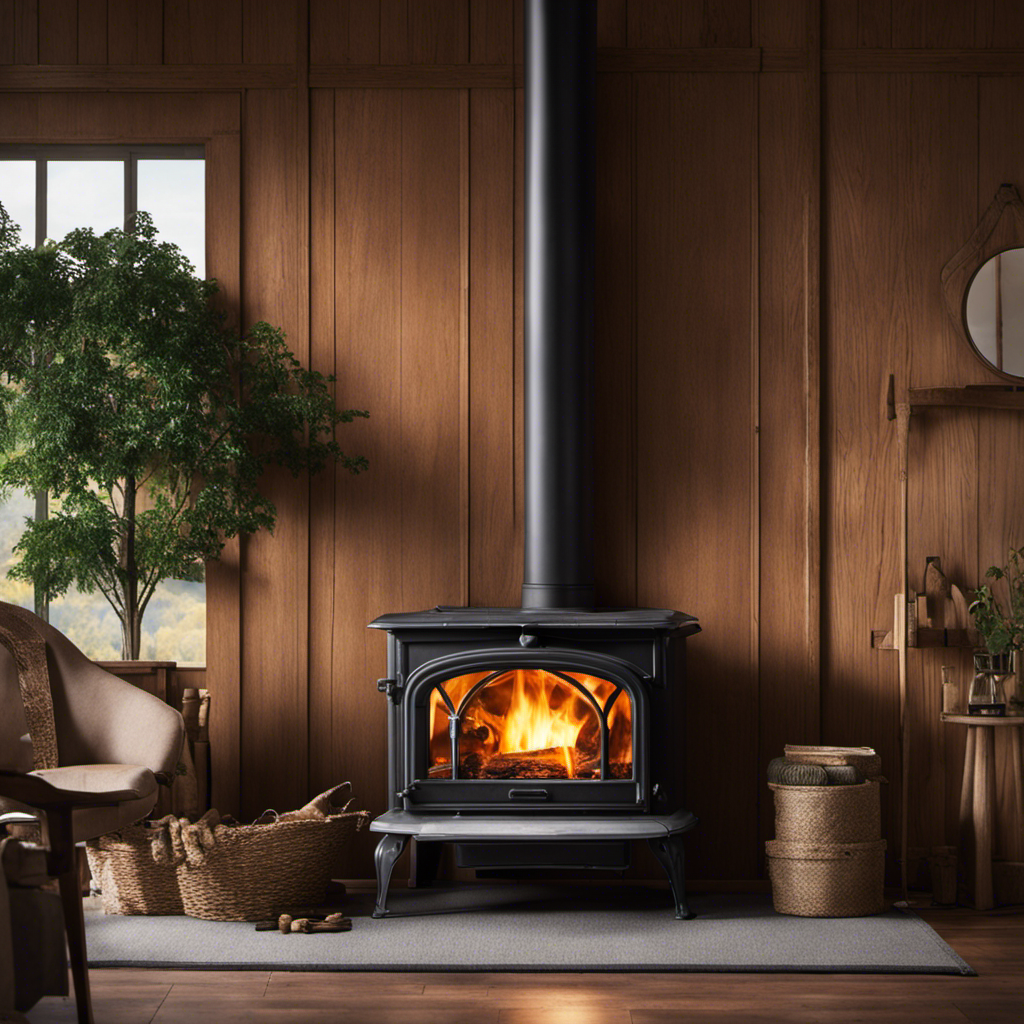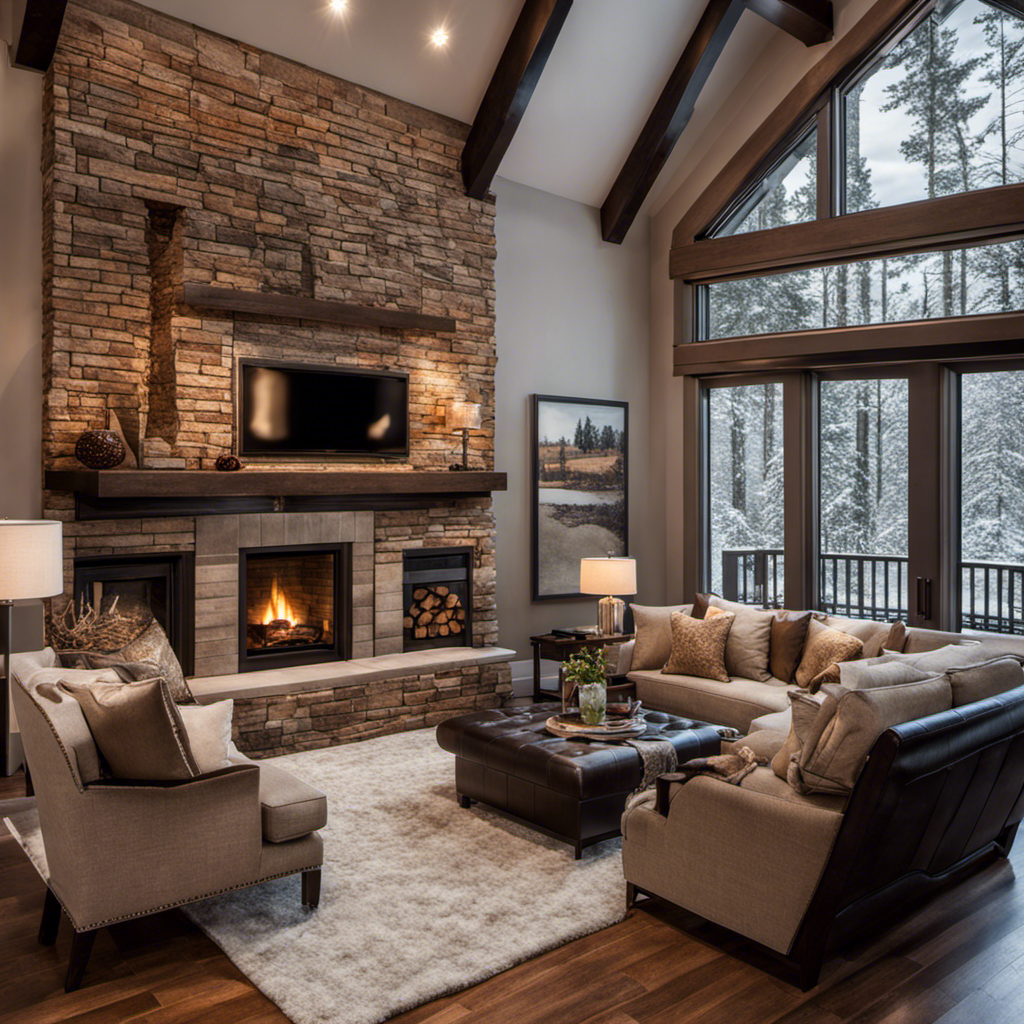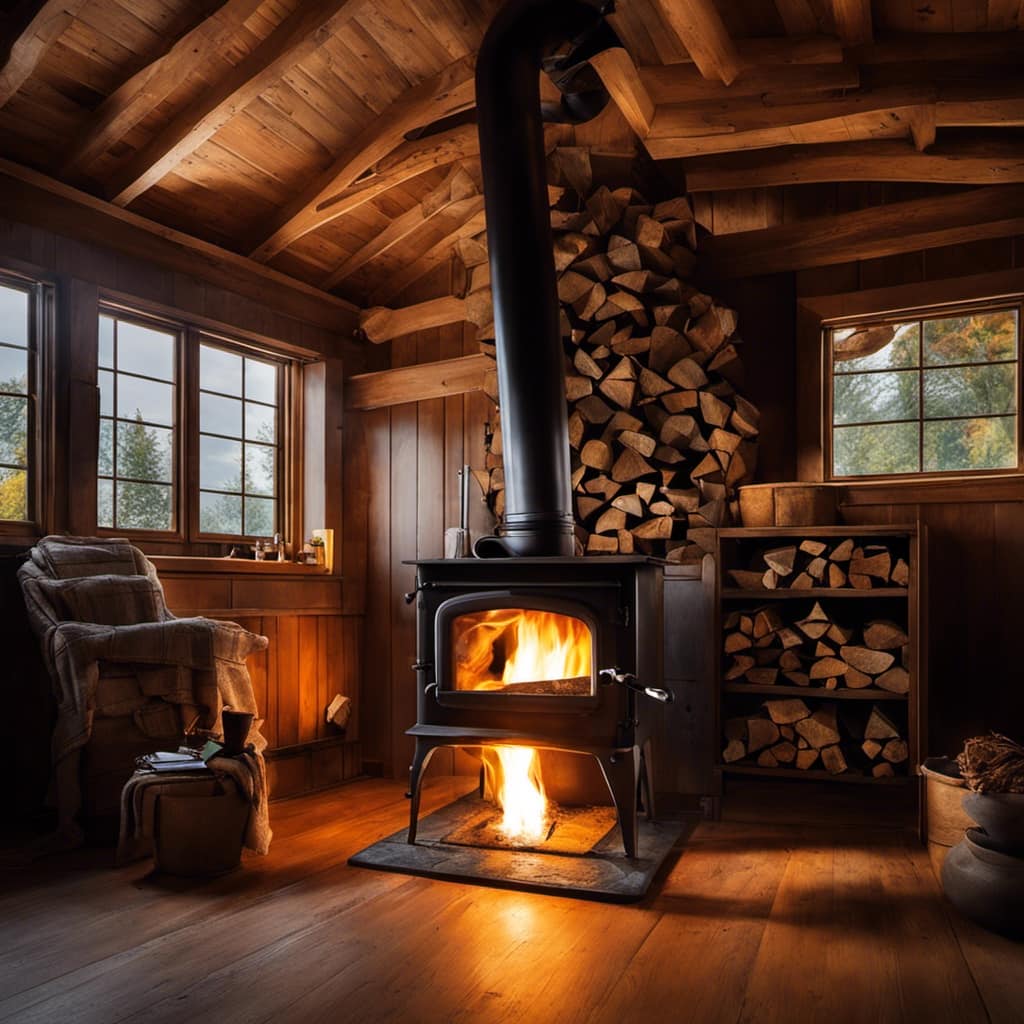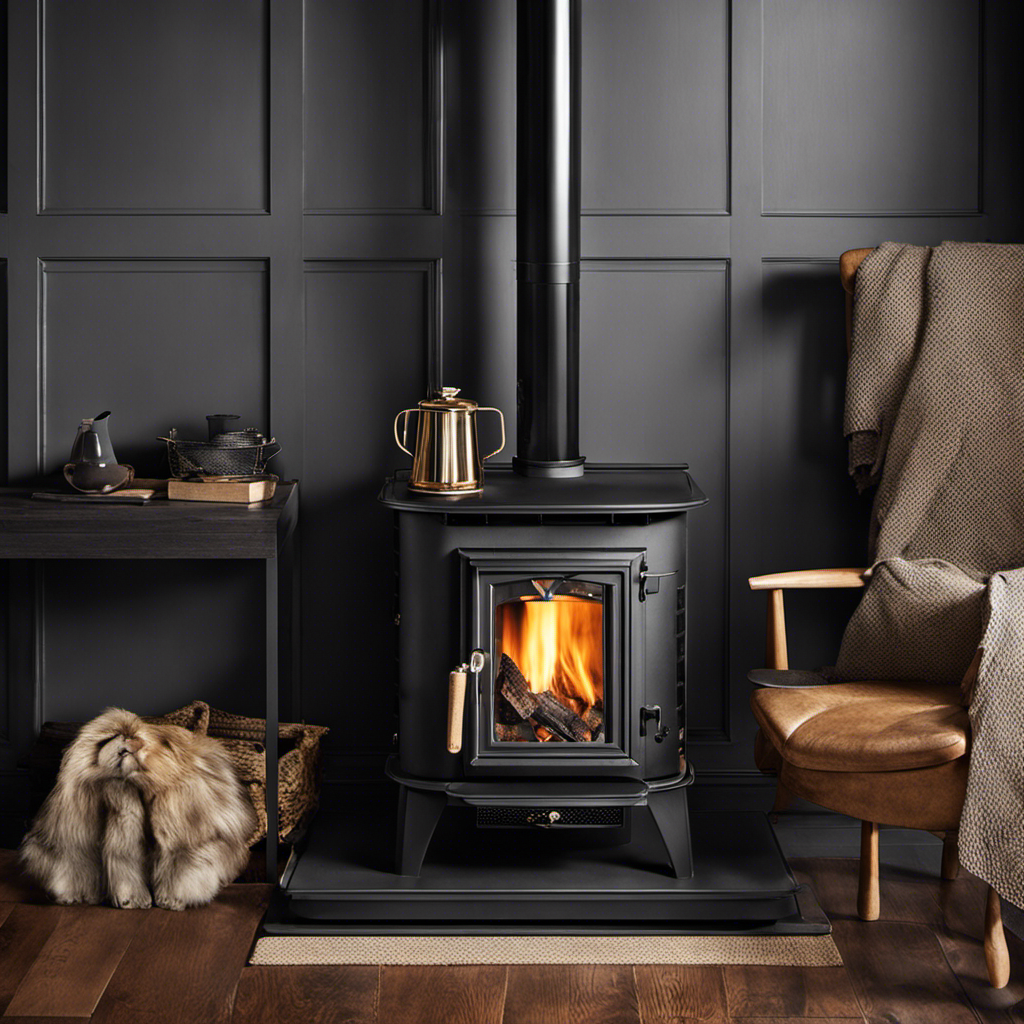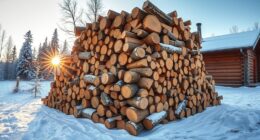As someone who owns a wood stove, I have dealt with the annoyance of managing a stove that appears to have a will of its own. It seems to constantly evade control, refusing to remain reliable and provide the necessary warmth.
But fear not! In this article, we’ll delve into the reasons behind this runaway behavior and explore the importance of proper installation, airflow control, chimney maintenance, and more.
Let’s put an end to the wood stove’s wild escapades for good.
Key Takeaways
- Improper installation can lead to overheating, inadequate airflow, and dangerous situations.
- Understanding airflow and draft control ensures efficient wood stove operation and prevents smoke from entering the home.
- Regular chimney inspections and maintenance are necessary to prevent chimney fires and detect potential issues.
- Overloading and overheating can compromise fire safety, so it is important to monitor the wood stove’s temperature and follow manufacturer’s guidelines for capacity.
The Importance of Proper Installation
I think the importance of proper installation can’t be overstated when it comes to preventing runaway wood stove incidents. Common installation mistakes can lead to dangerous situations, such as fires or carbon monoxide leaks.
One of the most common mistakes is improper clearance. Wood stoves need a certain amount of space around them to ensure proper airflow and prevent overheating.
Another mistake is using the wrong type of chimney or flue. It’s essential to choose the right size and material that can handle the heat and exhaust gases.
Signs of improper installation include excessive smoke, soot buildup, or a strong smell of burning. These indicators suggest a problem with the stove’s ventilation or sealing.
To avoid runaway wood stove incidents, it’s crucial to hire a professional installer who can follow the manufacturer’s guidelines and ensure a safe installation.
Understanding Airflow and Draft Control
Having a clear understanding of how to control airflow and draft is essential for ensuring the efficient operation of a wood stove. One key aspect of this understanding is recognizing the role of combustion air intake. This intake provides the necessary oxygen for the combustion process, which is vital for achieving a clean and efficient burn. To help illustrate this concept, let’s take a look at the table below:
| Airflow Setting | Draft Level |
|---|---|
| High | Strong |
| Medium | Moderate |
| Low | Weak |
| Closed | None |
Maintaining a Clean and Functional Chimney
Regularly cleaning and inspecting the chimney is essential for ensuring a clean and functional wood stove operation.
Chimney inspections are important because they help identify and address potential issues before they become major problems. One common chimney problem is the buildup of creosote, a highly flammable substance that can accumulate on the chimney walls. Regular inspections allow for the timely removal of creosote, reducing the risk of chimney fires.
Another common problem is chimney obstruction, which can occur due to the presence of debris or animal nests. Inspections help detect these obstructions and allow for their removal, ensuring proper airflow and preventing smoke from entering the home.
Additionally, inspections can identify structural issues such as cracks or damaged bricks, which can be repaired to maintain the integrity of the chimney.
Avoiding Overloading and Overheating
To avoid overloading and overheating, it’s important to monitor the wood stove’s temperature and not exceed its recommended capacity. This is crucial for fire safety precautions and to ensure the longevity of your wood stove.
Here are some important points to consider:
-
Keep an eye on the temperature gauge: Regularly check the temperature gauge on your wood stove to ensure it remains within the recommended range. This will help you avoid overheating and potential damage to the stove.
-
Follow the manufacturer’s guidelines: Each wood stove has a specific capacity that shouldn’t be exceeded. Make sure to read and follow the manufacturer’s guidelines to prevent overloading and potential accidents.
-
Stick to a regular maintenance routine: Regularly clean and inspect your wood stove to ensure it’s functioning properly. This will help prevent any build-up of creosote or other debris that could increase the risk of overheating.
Tips for Securing Your Wood Stove in Place
I used metal brackets and screws to secure my wood stove in place, ensuring it won’t move or tip over during use. Anchoring methods for wood stoves are crucial for safety and stability.
There are several options available to anchor your wood stove effectively. One method is using floor brackets, which are attached to the stove’s legs and then secured to the floor using screws or bolts. Another option is wall brackets, which are installed on the back of the stove and then anchored into the wall. These brackets provide additional stability and prevent any movement or tipping.
Additionally, floor protection is essential to prevent heat transfer to combustible materials. Common floor protection options for wood stoves include fire-resistant tiles, concrete boards, or a non-combustible hearth pad. These materials create a barrier between the stove and the floor, reducing the risk of fire or damage.
Proper anchoring and floor protection not only ensure the safety of your wood stove but also provide peace of mind during operation.
Frequently Asked Questions
What Are the Signs That Indicate Improper Installation of a Wood Stove?
Improper installation of a wood stove can be indicated by signs such as poor drafting, smoke leakage, and excessive creosote buildup. Proper maintenance and troubleshooting techniques can help identify and address these issues.
How Can I Improve the Airflow and Draft Control in My Wood Stove?
To improve airflow and draft control in my wood stove, I would start by cleaning the chimney and air vents. I could also adjust the damper and check for any obstructions. Troubleshooting common problems is crucial for improving efficiency.
What Are the Common Issues That Can Arise From a Dirty or Malfunctioning Chimney?
Common chimney problems can arise from a dirty or malfunctioning chimney. To clean a chimney, use a chimney brush to remove creosote and soot buildup. Regular maintenance is crucial to prevent potential hazards and ensure proper functioning.
How Can I Prevent Overloading and Overheating of My Wood Stove?
To prevent overloading and overheating of my wood stove, I ensure proper maintenance. By regularly cleaning the chimney, inspecting the stove for damage, and using the appropriate amount of fuel, I can avoid potential hazards.
Are There Any Additional Safety Measures I Should Take to Secure My Wood Stove in Place?
To secure my wood stove in place, I recommend anchoring it properly. This ensures that it won’t run away and provides added safety. Follow the manufacturer’s instructions and use sturdy materials for a secure installation.
Can Voda Fans Be Used on All Types of Wood Stoves?
Can Voda Fans be used on all types of wood stoves? The answer lies in wood stove compatibility. It is crucial to ensure that the Voda Fan you choose is compatible with your specific wood stove model. Checking the manufacturer’s guidelines and specifications is essential to determine if the Voda Fan can be safely and effectively used on your particular wood stove. Always prioritize compatibility to ensure optimal performance and longevity of both your Voda Fan and wood stove.
Conclusion
In conclusion, it seems that my wood stove has a mind of its own and always wants to run away. Despite my best efforts to secure it and maintain it properly, it still manages to break free.
Perhaps it’s just trying to remind me that even in the world of technology and control, nature can still have a rebellious streak.
So, I’ll continue to enjoy the warmth it provides, while keeping a watchful eye on its escape attempts.
Logan’s affair with adventure began in childhood. He hailed from a small town where vast forests bordered one side and endless shores stretched on the other. His days were spent exploring uncharted woods, climbing tall trees, or listening to the tales of old sailors. This early immersion in a world brimming with stories and mysteries became the foundation of his passion for writing.

